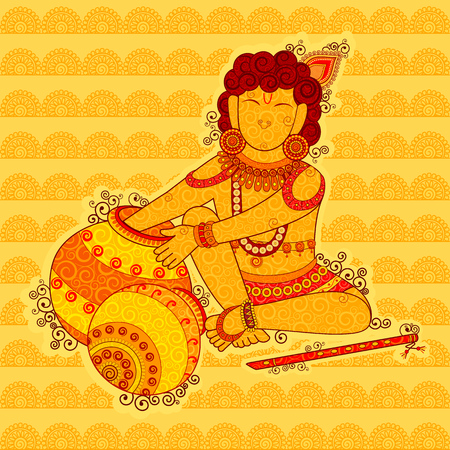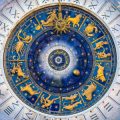Introduction to Grah Gochar and Rashiyon
In the rich tapestry of Indian culture, the concepts of Grah Gochar (planetary transits) and Rashiyon (zodiac signs) hold a position of deep reverence and practical importance. Rooted in the ancient science of Jyotish Shastra, these astrological elements are intricately woven into the daily lives and traditional beliefs of millions across India. The movement of planets—known as Grah Gochar—is considered to influence not just individual destinies but also collective societal trends, economic changes, and even national events. Similarly, Rashiyon, representing the twelve segments of the zodiac, provide a cosmic framework through which people interpret personality traits, auspicious timings (muhurat), and life’s turning points. From planning marriages and naming ceremonies to making business decisions and embarking on pilgrimages, Indians frequently consult astrologers to understand how current planetary positions may impact their Rashi or moon sign. This age-old tradition continues to shape modern Indian life, blending spiritual insights with everyday choices, thus highlighting the enduring significance of Grah Gochar and Rashiyon in shaping personal and community narratives.
2. Historical and Cultural Significance in India
Astrology, known locally as Jyotish Shastra, has deep historical roots in Indian culture. The practice of interpreting Grah Gochar (planetary transits) and Rashiyon (zodiac signs) is not only an ancient tradition but also a living element that continues to influence modern Indian life. The Vedic scriptures, dating back thousands of years, first codified the movements and effects of planets on human destiny. Over centuries, these astrological beliefs became intertwined with various aspects of daily life, from the timing of religious rituals to major personal decisions.
Grah Gochar and Rashiyon play a significant role in shaping the dates and manner in which festivals are celebrated across India. For instance, the festival of Makar Sankranti is observed when the Sun enters the Makara (Capricorn) Rashi, while Chaitra Navratri aligns with the beginning of the lunar year as per astrological calculations. These celestial events are believed to bring auspicious energy, guiding millions to participate in collective prayers, fasts, and charitable acts.
| Festival/Ritual | Associated Grah/Rashi | Cultural Impact |
|---|---|---|
| Makar Sankranti | Sun enters Makara Rashi | Marks harvest season; mass pilgrimages & charity |
| Karva Chauth | Moon phases & transit | Women observe fast for spouse’s wellbeing; community gatherings |
| Chaitra Navratri | Lunar New Year; alignment with Chandra Rashi | Initiates worship and new ventures; spiritual cleansing |
| Marriage Muhurat | Jupiter/Venus transit; compatibility of Rashiyon | Auspicious timings for weddings; family consultations with astrologers |
The impact of Grah Gochar and Rashiyon extends beyond public festivities into private lives. Decisions such as marriage alliances, naming ceremonies (Namkaran), housewarming (Griha Pravesh), and even business ventures are often guided by favorable planetary positions and Rashi compatibility. Astrologers—often referred to as Panditji or Jyotishi—are regularly consulted to select ‘shubh muhurat’ (auspicious times), ensuring harmony with cosmic rhythms.
This enduring reliance reflects how astrology is woven into the social fabric of India, influencing both collective customs and individual choices. Whether in rural villages or bustling cities like Mumbai and Delhi, the guidance derived from Grah Gochar and Rashiyon remains a trusted compass for navigating life’s key milestones.

3. Grah Gochar: Understanding Planetary Transits
Grah Gochar, or planetary transit, holds immense significance in Indian astrology and daily life. In traditional Jyotish Shastra, Grah refers to planets and Gochar means movement or transit across the zodiac signs (Rashis). Each planet, from Surya (Sun) to Shani (Saturn), follows a unique path and speed as it journeys through the Rashiyon. These transits are believed to influence not just individual horoscopes but also the collective consciousness of Indian society.
Key Planets and Their Transits
Among all Navagrahas, some planets are considered more impactful during their transits. For example, Guru (Jupiter) is known as the planet of wisdom and prosperity; its transit, called Guru Gochar, is awaited by many for marriage prospects, education, and career growth. Similarly, Shani Gochar (Saturn’s transit) is renowned for bringing challenges, discipline, and karmic lessons—especially during Sade Sati when Shani transits over Moon’s position in one’s birth chart. Other important transits include Rahu-Ketu shifts which are associated with sudden events or transformations and Mangal (Mars) Gochar affecting energy, courage, and sometimes disputes.
Predicted Impact According to Indian Astrology
The impact of Grah Gochar on Indian life is predicted based on the nature of each planet and its relationship with the twelve Rashis. For instance, when Surya enters Mesha Rashi (Aries), it marks the auspicious Ugadi or Hindu New Year in several states. Venus transiting Taurus may enhance beauty and financial gains, while Mercury in Gemini can improve communication skills. Astrologers analyze these movements using Panchangam (traditional almanac) and Kundali (horoscope charts) to forecast periods of growth, caution, or spiritual reflection.
Cultural Relevance in India
Grah Gochar is not only a matter of personal belief but also shapes rituals and festivals across India. Many families consult astrologers before making key decisions like marriage alliances or starting new ventures, aligning their actions with favorable planetary positions. This blend of cosmic calculation and cultural tradition continues to guide millions of Indians in their daily choices and long-term plans.
4. Rashiyon: The Role of Zodiac Signs
In Indian astrology, the concept of Rashiyon, or zodiac signs, holds a pivotal role in interpreting an individual’s personality, life path, and compatibility with others. The twelve Rashis—Mesha (Aries), Vrishabha (Taurus), Mithuna (Gemini), Karka (Cancer), Simha (Leo), Kanya (Virgo), Tula (Libra), Vrischika (Scorpio), Dhanu (Sagittarius), Makara (Capricorn), Kumbha (Aquarius), and Meena (Pisces)—are each governed by specific planetary lords and carry unique characteristics. These interpretations are deeply embedded in Indian culture, influencing personal decisions, marriage alliances, career choices, and daily rituals.
Analysis of the Twelve Rashiyon
| Rashi | Planetary Lord | Main Traits |
|---|---|---|
| Mesha (Aries) | Mars | Courageous, energetic, pioneering |
| Vrishabha (Taurus) | Venus | Stable, patient, materialistic |
| Mithuna (Gemini) | Mercury | Communicative, adaptable, intellectual |
| Karka (Cancer) | Moon | Emotional, nurturing, intuitive |
| Simha (Leo) | Sun | Proud, creative, authoritative |
| Kanya (Virgo) | Mercury | Analytical, meticulous, practical |
| Tula (Libra) | Venus | Balanced, diplomatic, harmonious |
| Vrischika (Scorpio) | Mars/Ketu* | Intense, secretive, determined |
| Dhanu (Sagittarius) | Jupiter | Optimistic, philosophical, adventurous |
| Makara (Capricorn) | Saturn | Disciplined, ambitious, persevering |
| Kumbha (Aquarius) | Saturn/Rahu* | Innovative, humanitarian, independent |
| Meena (Pisces) | Jupiter | Sensitive, spiritual, compassionate |
*Note: In traditional Indian astrology, Mars is lord of Vrischika and Saturn is lord of Kumbha. Rahu and Ketu are also considered for deeper analysis.
Zodiac Compatibility in Indian Culture
The compatibility between Rashiyon is often checked before important life decisions like marriage. This practice—known as Kundali Milan or horoscope matching—analyses the Gunas and Doshas based on both individuals’ Rashis to ensure harmony and mutual understanding. For example:
| Zodiac Pairing Example | Naturally Compatible Rashis* |
|---|---|
| Mesha & Simha/Vrischika/Dhanu | Taurus & Virgo/Capricorn Karka & Scorpio/Pisces Tula & Gemini/Aquarius Etc. |
*Compatibility depends on multiple factors including planetary aspects and Nakshatras.
Individual Impacts on Daily Life
The influence of one’s Rashi can be seen in day-to-day activities such as choosing auspicious dates for ceremonies (Muhurta), performing Graha Shanti rituals during adverse Dasha periods, and even naming newborns according to their Janma Rashi. The awareness of these impacts empowers many Indians to align their actions with cosmic rhythms for greater well-being.
Cultural Significance across India
The belief in Rashiyon transcends regional boundaries—from Tamil Nadu’s deep-rooted Nadi astrology to North India’s focus on Lagna Kundali—reflecting its profound role in shaping personal identity and social practices across Bharat.
5. Impact on Major Life Events
In Indian society, the influence of Grah Gochar (planetary transits) and Rashiyon (zodiac signs) extends deeply into the most significant milestones of life. Astrological guidance is sought during major decisions, reflecting the age-old belief that planetary movements and zodiacal alignments play a pivotal role in shaping one’s destiny.
Marriage: The Role of Planetary Alignments
Marriage, or “shaadi”, is one of the most auspicious and culturally significant events in India. Families often consult astrologers to compare kundalis (birth charts), ensuring the compatibility of Grah Gochar and Rashiyon between prospective brides and grooms. Mismatched charts may result in delayed marriages or even cancellations, while favorable combinations are believed to bring harmony, prosperity, and longevity to marital relationships.
Career: Guiding Professional Choices
Career decisions are also heavily influenced by astrology. Many Indians choose their professions based on the strengths and weaknesses indicated in their birth charts. The position of planets like Shani (Saturn) and Budh (Mercury) are closely analyzed for career prospects. During challenging Gochar periods, individuals may perform remedies or pujas seeking better outcomes, believing that planetary transits can affect promotions, job changes, or business ventures.
Health: Predicting Wellness through Astrology
The health of an individual is another area where Grah Gochar and Rashiyon are thought to have substantial impact. Specific planetary positions are associated with certain health issues; for example, the influence of Mangal (Mars) is often linked with blood-related concerns or accidents. Preventive rituals and recommendations from astrologers are common practices aimed at mitigating negative effects predicted by transit periods.
Education: Timing Success and Challenges
Education is highly valued in Indian culture, and astrological readings frequently guide parents and students in making important choices about streams of study or favorable times for examinations. The presence of Guru (Jupiter) in beneficial houses is considered auspicious for academic success, while adverse Gochar may prompt families to perform specific remedies to overcome obstacles in learning.
A Cultural Perspective
The integration of astrology into these major life events highlights the deep-rooted cultural respect for cosmic influences within Indian society. Whether it is seeking muhurat (auspicious timings) for ceremonies or performing traditional upayas (remedies), the belief in Grah Gochar and Rashiyon continues to shape personal journeys across generations.
6. Contemporary Relevance and Adaptation
In modern India, the ancient science of Grah Gochar (planetary transits) and Rashiyon (zodiac signs) continues to hold deep significance, seamlessly blending with everyday life and contemporary trends. Despite rapid urbanisation and digital transformation, traditional astrological beliefs are not only surviving but thriving in new forms. Young professionals in Bengaluru consult astrologers via mobile apps before key career moves, while families in Mumbai still refer to Panchang for auspicious wedding dates, highlighting the continued trust in Vedic astrology.
Popular culture reflects this enduring connection. Bollywood movies often weave themes of destiny and planetary influence into storylines, resonating with audiences across generations. TV channels like Aaj Tak and Star Plus feature daily Rashifal (horoscopes), integrating astrology into mainstream media consumption. Influential celebrities openly discuss their faith in Grah Dasha remedies or gemstone rings on social media, further normalising astrological practices among their followers.
Technology has amplified the reach and accessibility of astrology. Numerous Indian startups offer personalised Kundli readings, daily Gochar alerts, and live consultations through websites and smartphone applications. Platforms like AstroSage and GaneshaSpeaks have millions of users who rely on digital interpretations of their birth charts and planetary positions. Even matrimonial platforms such as Shaadi.com allow users to filter matches based on Nakshatra compatibility, demonstrating how ancient wisdom adapts to modern matchmaking.
This synthesis of tradition and innovation is visible during major festivals as well. During Makar Sankranti or Navratri, WhatsApp forwards and Instagram reels circulate tips for harnessing positive energies based on current Grah Gochar. Online pujas and virtual Jyotish sessions gained prominence during the pandemic, enabling devotees to seek guidance without geographical barriers.
The resilience of astrological customs in contemporary India speaks to a collective desire for meaning amid uncertainty. Whether used for personal guidance, family decisions, or entertainment, the impact of Grah Gochar and Rashiyon remains intricately woven into the fabric of Indian society—evolving yet ever-present.
7. Conclusion: The Enduring Influence
In conclusion, the impact of Grah Gochar and Rashiyon remains deeply woven into the fabric of Indian life. These astrological elements continue to shape not just individual destinies, but also influence collective decisions and cultural perspectives across the country. Whether it is choosing an auspicious time for marriage, making significant business investments, or embarking on a spiritual journey, the consultation of planetary transits (Grah Gochar) and zodiac signs (Rashiyon) provides guidance that many Indians trust and rely upon. Even as India embraces modernity and technological progress, the enduring relevance of these ancient astrological systems highlights a unique blend of tradition and contemporary thought. The ongoing role of Grah Gochar and Rashiyon in shaping attitudes, beliefs, and actions is a testament to their importance in both personal choices and societal values. They offer not only a sense of direction during uncertainty but also preserve a rich heritage that continues to define the Indian worldview.


